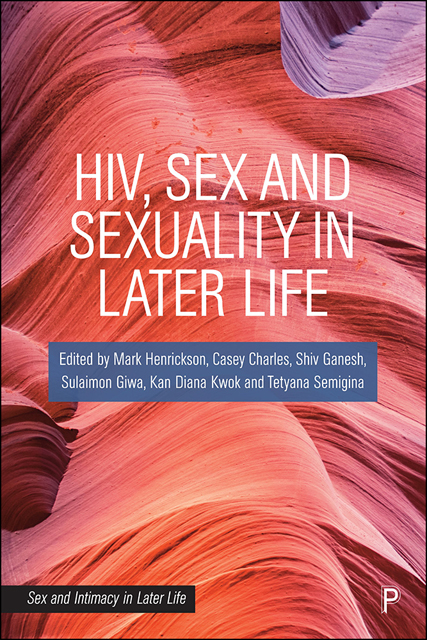3 - ‘Everyone is on their own and nobody needs us’: women ageing with HIV in Ukraine
Published online by Cambridge University Press: 16 June 2023
Summary
Introduction
The population in the world is ageing. People living with HIV are not an exception: globally, from 2000 to 2016, the share of people living with HIV older than 50 increased from 8 to 16 per cent (Autenrieth et al, 2018). This is occurring due to the availability of antiretroviral treatment (ART), because more young people practise safe behaviours and because HIV infection may be acquired later in life (Freeman and Anglewicz, 2012).
In recent years, a substantial body of research has indicated peculiarities of ageing with HIV or being diagnosed HIV at an older age, and the low level of knowledge about HIV among the older population (Orchi et al, 2008; Nardelli et al, 2016; Davis and Elder, 2020). International agencies have suggested programmes to increase the quality of life of mature people living with HIV (UNAIDS, 2013; Global HIV Prevention Coalition, 2020); at the same time, they have highlighted the importance of diagnostic interventions in routine interactions between older people and healthcare providers.
Like many European countries, Ukraine is an ageing society. According to the State Statistics Service of Ukraine, in 2014 the share of the Ukrainian population aged 60 years or over was 21.4 per cent, and forecasts suggest that this will increase to 25 per cent by 2025 and 38 per cent by 2050 (Talko, 2015). Ukraine has a high prevalence of HIV. However, policy programmes, statistics and research are focused primarily on individuals aged 15– 49 and children. Information on both HIV prevalence in older adults and their HIV risk behaviours has been lacking. Gender-sensitive HIV services and programmes are rare, and the specific needs of women are not met (Shulga et al, 2015; Demchenko et al, 2017).
This chapter presents findings from a study of the lived experiences of women aged 50 and older living with HIV in three large cities in Ukraine, as well as information obtained from social workers. The UNAIDS (2013) definition of older people living with HIV refers to people 50 years of age or older, and we applied that age threshold in this study. The chapter also highlights the need for Ukrainian government HIV programmes to take account of the needs of older people. The chapter concludes with suggestions for prevention interventions for women ageing with HIV.
- Type
- Chapter
- Information
- HIV, Sex and Sexuality in Later Life , pp. 46 - 64Publisher: Bristol University PressPrint publication year: 2022

